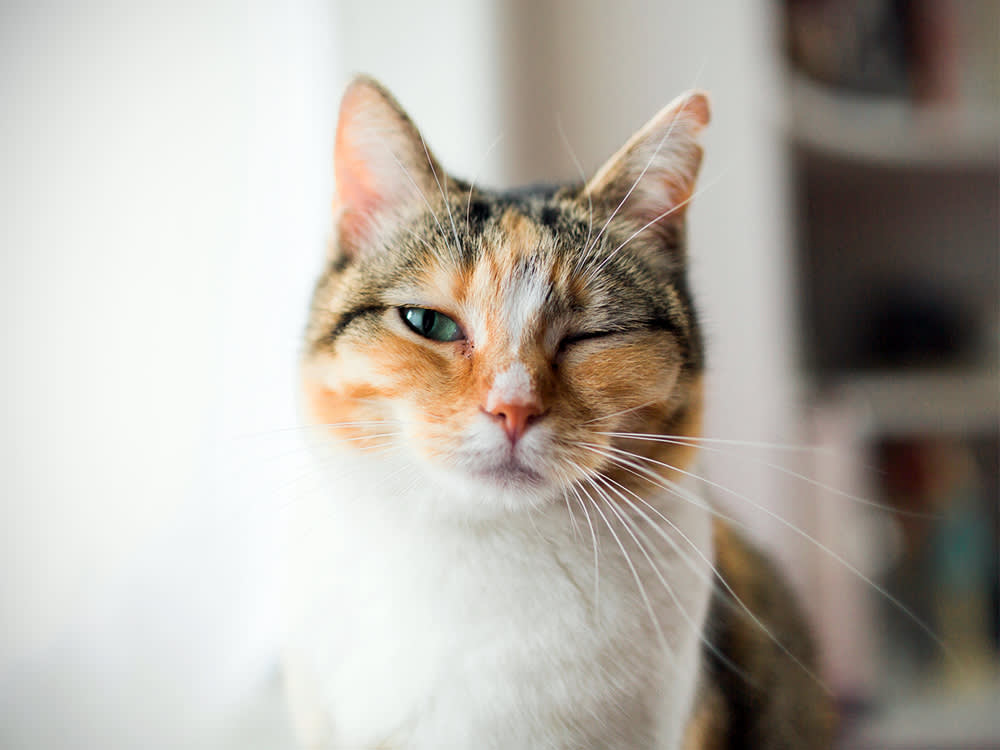How to Give Your Cat Eye Drops
Two veterinarians tag team on how to properly administer cat eye medication.
Well, your cat has been a lot more winky than usual (and they aren’t playing coy or sharing an inside joke with you). You’ve taken them to the vet and have been tasked with giving them daily eye drops at home. We know this sounds like a big undertaking and we don’t envy anyone who has to give their cat medicine. That’s why we highly recommend you take the proper steps to ensure you and your cat’s safety during this process.
You have two options: take your cat directly to their veterinarian to get their daily dose or administer the eye drops at home. The benefit of the latter is that it saves your cat the emotional distress of being extracted from their home environment (especially when they’re at a low point). An added benefit is that it may save the potential costs of vet visits. However, you should always take your cat to the vet if they’re exhibiting signs of pain, especially if you aren’t able to properly assist them at home. Below, a step-by-step tutorial to make administering your cat’s eye medications easier:
Save on the litter with color-changing tech that helps you better care for your cat.
Safety First
The proper administration of eye medication is critical in helping your cat quickly recover from an eye injury or infection. You should always make sure that you have carefully read the drug label and understand the prescription instructions. If you have any questions, be sure to contact your veterinarian for clarification prior to administering any medication.
Wash your hands before and after administering the medication to prevent contamination or the potential spread of infection. Be sure to keep the eye medication’s applicator tip clean and do not allow it to contact your cat, the surface of their eye, eyelids, or any other surface. If this occurs, clean the tip by wiping it off with a clean cloth, and ask your veterinarian for specific cleaning instructions.
If your cat’s eye is painful, you may need to have someone assist you with restraint. Usually, as the treatment begins to take effect, the pain lessens and assistance becomes less necessary.
Step-by-Step Instructions
Gently clean away any debris around your cat’s eyes with warm water and a washcloth prior to administering the eye drops. This can be soothing and prepare your cat for administering the medication(s).
If you are administering the medication on your own, you may find it easiest to place your cat in your lap. It may be helpful to restrain the cat by wrapping them in a blanket or towel with only their head exposed. The first few times, or if your cat’s eye is painful, it may be helpful to have someone else gently hold your wrapped cat while you apply the drops.
Hold the bottle using the thumb and index finger of your dominant hand with the tip pointed downwards. You may want to rest this hand on the top of your cat’s head for stability.
Use the last two fingers of the same hand to pull back the upper eyelid. Place your remaining fingers under your cat’s jaw to support the head. The lower eyelid will act as a pouch to receive the drops.
Hold the bottle close to the eye but DO NOT touch the eye’s surface with the applicator.
Squeeze the prescribed number of drops directly onto the eyeball, aiming for the center of the eye, and then release the head.
Your cat will blink, spreading the medication over the surface of their eye. It is common for cats to blink or paw at their eye after drops are administered. It is also common for cats to drool or salivate after receiving the drops. But if the rubbing seems excessive or if their eye appears more inflamed or red after receiving the medication, call your veterinarian.




